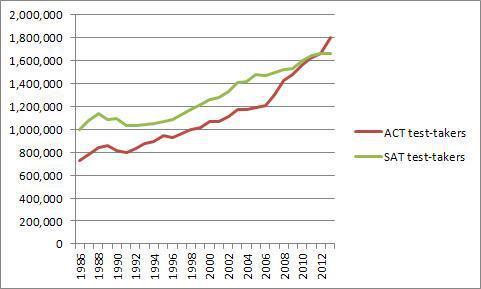Giving The SAT A Low Score, Ctd
Yesterday the College Board introduced an overhaul of the SAT, with a return to the 1,600-point scoring system, a revamped and now-optional- essay section, and a new emphasis on American “founding documents” as source material. Todd Balf offers a “simplistic example” of a new SAT prompt:
Students would read an excerpt from a 1974 speech by Representative Barbara Jordan of Texas, in which she said the impeachment of Nixon would divide people into two parties. Students would then answer a question like: “What does Jordan mean by the word ‘party’?” and would select from several possible choices. This sort of vocabulary question would replace the more esoteric version on the current SAT. The idea is that the test will emphasize words students should be encountering, like “synthesis,” which can have several meanings depending on their context. Instead of encouraging students to memorize flashcards, the test should promote the idea that they must read widely throughout their high-school years.
Elizabeth Kolbert, who last week panned the current version of the exam, thinks the timing is interesting:
The Board’s announcement was months – perhaps years – in the making. Suggestively, though, it came just two weeks after the release of a new study that questioned the SAT’s utility. Commissioned by the National Association for College Admissions Counseling, the study analyzed the college experiences of students at so-called test-optional schools. It found only “trivial” differences in grades and graduation rates between the students who had presented SAT scores and those who had not.
Jia Lynn Yang suggests that competition from the ACT is behind the redesign:
According to these numbers, the ACT passed the SAT in 2012. But by some measures, the lead may have changed earlier in 2010. That year, when it became clear that the ACT was gaining on the iconic SAT, FairTest says the College Board revised its number upward to include more exam administrations. “This is Coke versus Pepsi trying to hold onto, or in this case try to regain, market share,” said Bob Schaeffer, director of public education at FairTest. Schaeffer says the new SAT in 2005 was like “the New Coke of tests; a total failure in the marketplace. “
Meanwhile, it appears college administrators are cautiously optimistic about the redesign:
Michael Sexton, vice president for enrollment management at Santa Clara University, said that his institution has never looked at scores on the existing essay on the SAT, “so we won’t miss it.” He said that, generally, the changes announced Wednesday made sense. And he said he values the SAT as helping admissions officers make decisions, especially in science fields.
A number of other admissions leaders agreed, although frequently with caveats about one or more changes. Seth Allen, vice president and dean of admissions and financial aid at Pomona College, said via email that “there appears to be more of an emphasis on measuring critical thinking skills in this new version of the test. There also appears to be more emphasis on connecting the material to actual learning rather than memorization and test preparation. Both are steps in the right direction.” But Allen said he was “less keen on the idea of including American-centric passages in every exam. This creates a potential issue for non-US applicants.”
Readers recently debated the merits of the SAT here.



Andrew Sullivan's Blog
- Andrew Sullivan's profile
- 153 followers




